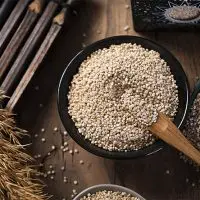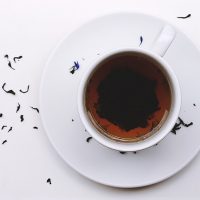Recently updated on May 1st, 2024 at 09:19 pm
 Referred to as NDMA, N-Nitrosodimethylamine is basically a yellow liquid that has no distinct odour. Produced in the US, it is only used as a research chemical. It was also used to make fuel for rockets, but this was stopped after high levels of this compound were found in the soil, water, and air samples collected near the manufacturing plant of rocket fuel.
Referred to as NDMA, N-Nitrosodimethylamine is basically a yellow liquid that has no distinct odour. Produced in the US, it is only used as a research chemical. It was also used to make fuel for rockets, but this was stopped after high levels of this compound were found in the soil, water, and air samples collected near the manufacturing plant of rocket fuel.
However, NDMA is unintentionally formed during the different manufacturing processes at various industrial sites and in water, soil, and air from reactions that involve some chemicals known as alkylamines. These are man-made and natural compounds that are found throughout the environment. But, NDMA doesn’t persist in the environment.
Once NDMA is released to the atmosphere, it breaks down in the sunlight within a few minutes. If NDMA is released to the soil surfaces, it can evaporate to the air, sink in the soil deeper or break down from sunlight exposure. In deep soil, NDMA will break within several months. If released into the water, it can break down through natural biological processes.
The Buzz Regarding N-Nitrosodimethylamine
Recently, N-Nitrosodimethylamine or NDMA caused a buzz in connection to issues regarding cancer from Zantac. According to the FDA, they discovered that several ranitidine medicines like Zantac contain low levels of NDMA, which is classified as a carcinogen based on the laboratory test results. As a probable human carcinogen, NDMA is considered as a substance that may cause cancer. But, does it really cause cancer?
Below are some of the things you must know:
Where Can You Find N-Nitrosodimethylamine?
NDMA is basically a by-product of different natural and manufacturing processes through chemical reactions. More often than not, it occurs in the following:
- Drinking water
NDMA may be produced through the process of chloramination or chlorination for water treatment. The contamination of NDMA in drinking water is because of the harmful minute concentrations. At these concentrations, it is difficult to detect and remove it from the drinking water. It doesn’t readily volatilize, adsorb or biodegrade. It can’t also be removed by the activated carbon. Only reverse osmosis and high UV radiation can reduce NDMA levels in drinking water.
- Cured meat
NDMA is commonly found at a low level in many items of human consumption such as tobacco smoke, beer, fish, and cured meat. The NDMA formation’s pathway involves nitrous acid, which is produced by sodium nitrite that is used for curing meat to avoid botulism. NDMA occurs through the combination of dimethylamine and nitrous acid derived from protein’s degradation in the lower gut. According to WHO, cured meats and other processed meats are considered a carcinogen.
Can NDMA Cause Cancer?
Angiotensin II Receptor blockers such as Irbesartan, Valsartan, and Losartan were recalled because they contain NDMA. But the result of a study that was made to evaluate cancer risk against NDMA-contaminated Valsartan products wasn’t conclusive of short-term carcinomas effects.
Although there are no reports of NDMA causing cancer in people according to ATSDR or Agency for Toxic Substances and Disease Registry, an increased risk of cancer outcomes was observed in further investigations.
In another study, NDMA may cause liver cancer and other specific tobacco nitrosamines may cause lung cancer. On the other hand, volatile N-nitrosamines may cause tumours in various human organs such as bladder, kidneys, liver, pancreas, lung, tongue, and oesophagus.
FDA advises the patients who want to stop taking Zantac and other prescription ranitidine must consult their trusted health care professional about some options for their treatments. There are other drugs approved and available in the market that have similar or same uses as prescription ranitidine, that don’t contain NDMA.
Also, if you are taking such medication, it would be wise to consider buying nutritional supplements to support your nutritional needs.
What You Can Do to Avoid NDMA?
NDMA is a carcinogen contaminant that is commonly used in various medications including ranitidine, losartan, valsartan, and irbesartan. It may also be produced during manufacture, introduced from contaminated catalysts and solvents, and introduced from the contaminated ingredients that are procured elsewhere. FDA has established a maximum dose for NDMA used for every tablet. Manufacturers were also given proper guidelines to follow.
One of the things you should do to avoid NDMA is to not use medications that contain it like the popular Zantac and use other alternative treatments instead. If you don’t know what treatment is suited for you, call your doctor for your concerns as more pharmacies are suspending sales of Zantac and other NDMA contaminated products.
Conclusion
Being aware of what NDMA or N-Nitrosodimethylamine is will not only help you be more knowledgeable about its effects on your health but also you will know how to avoid it. If you think you have consumed medications that contain NDMA in the past, it is best to consult your doctor immediately to avoid potential health concerns in the future.
Author Bio
Alaine Sonnenfeld is a health enthusiast who shares her fitness journey by writing articles on health and wellness. Growing up as an obese, Alaine strives to make healthier lifestyle choices today to improve her health and at the same time, inspire her readers to do the same.



